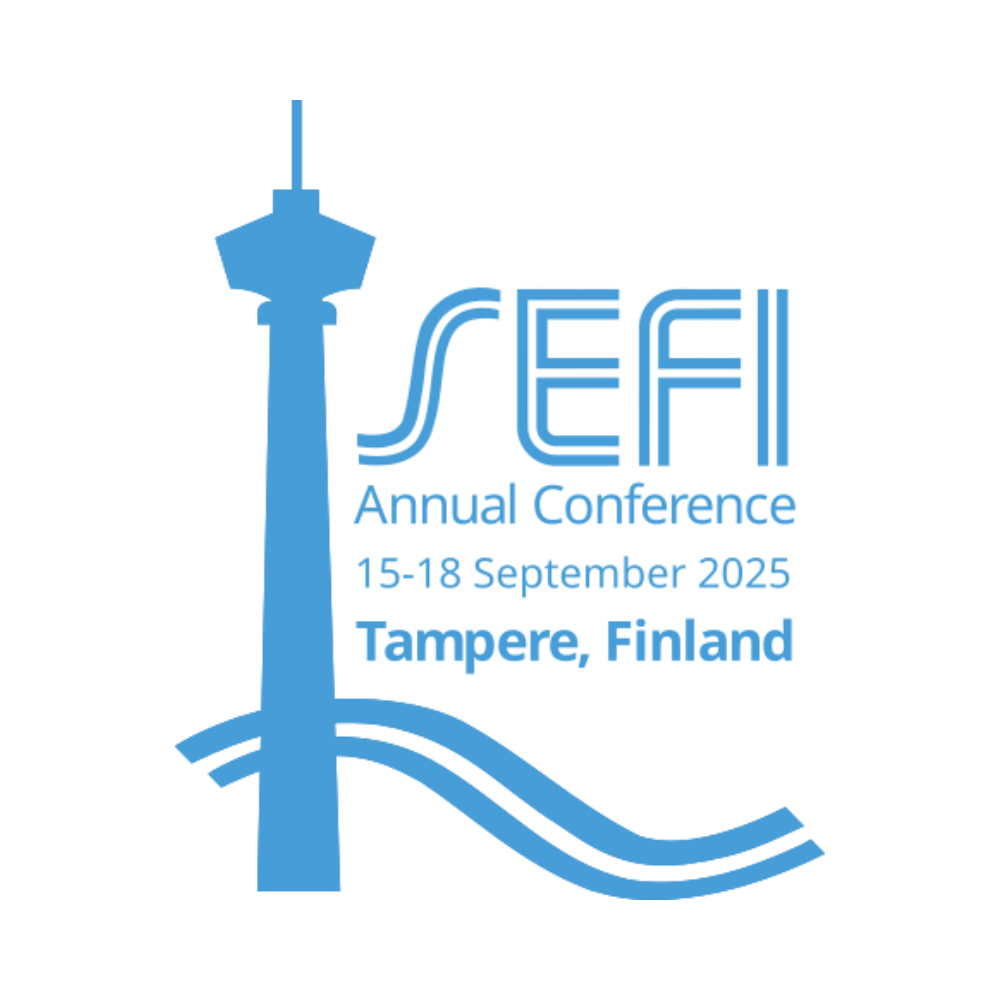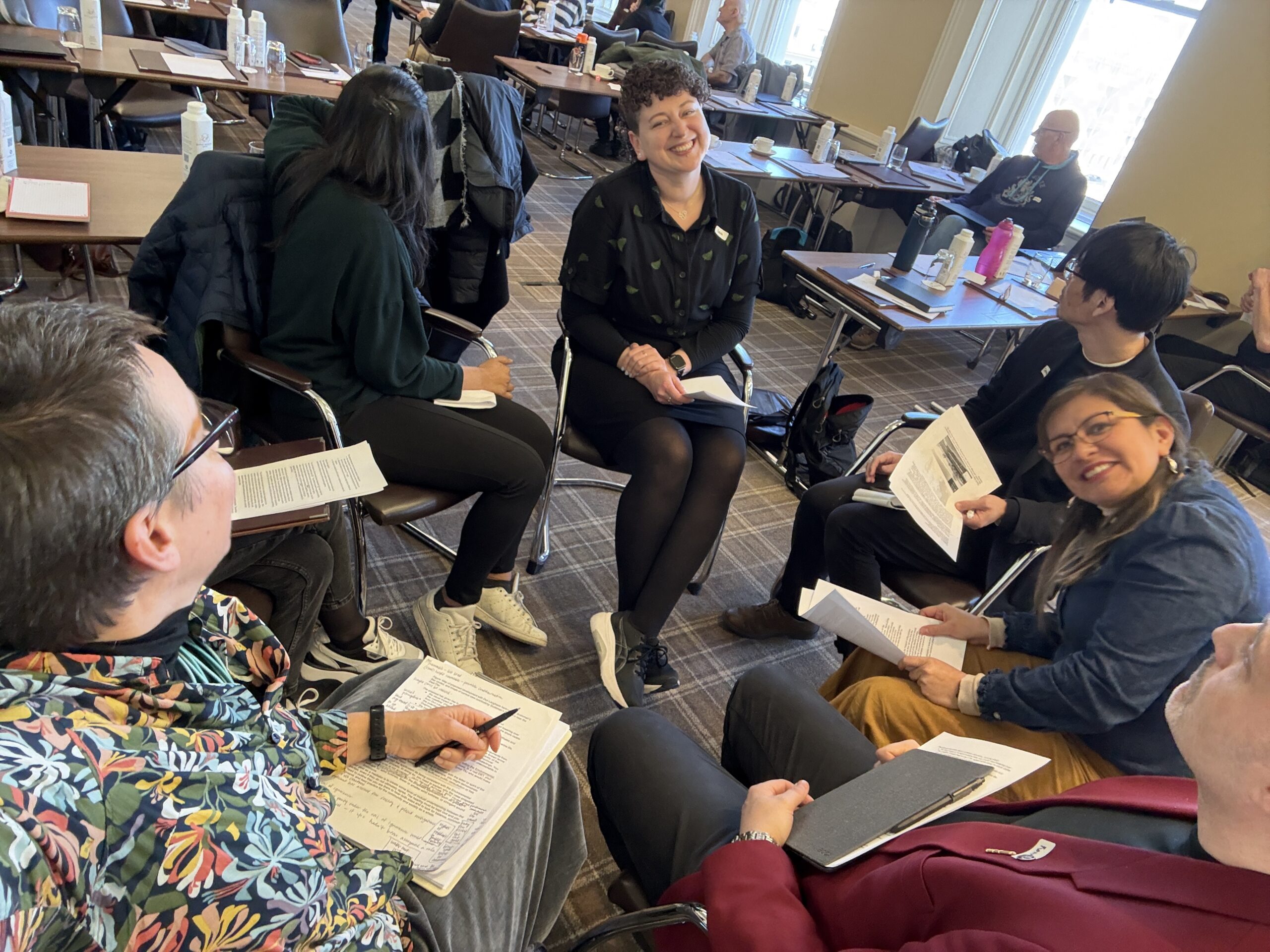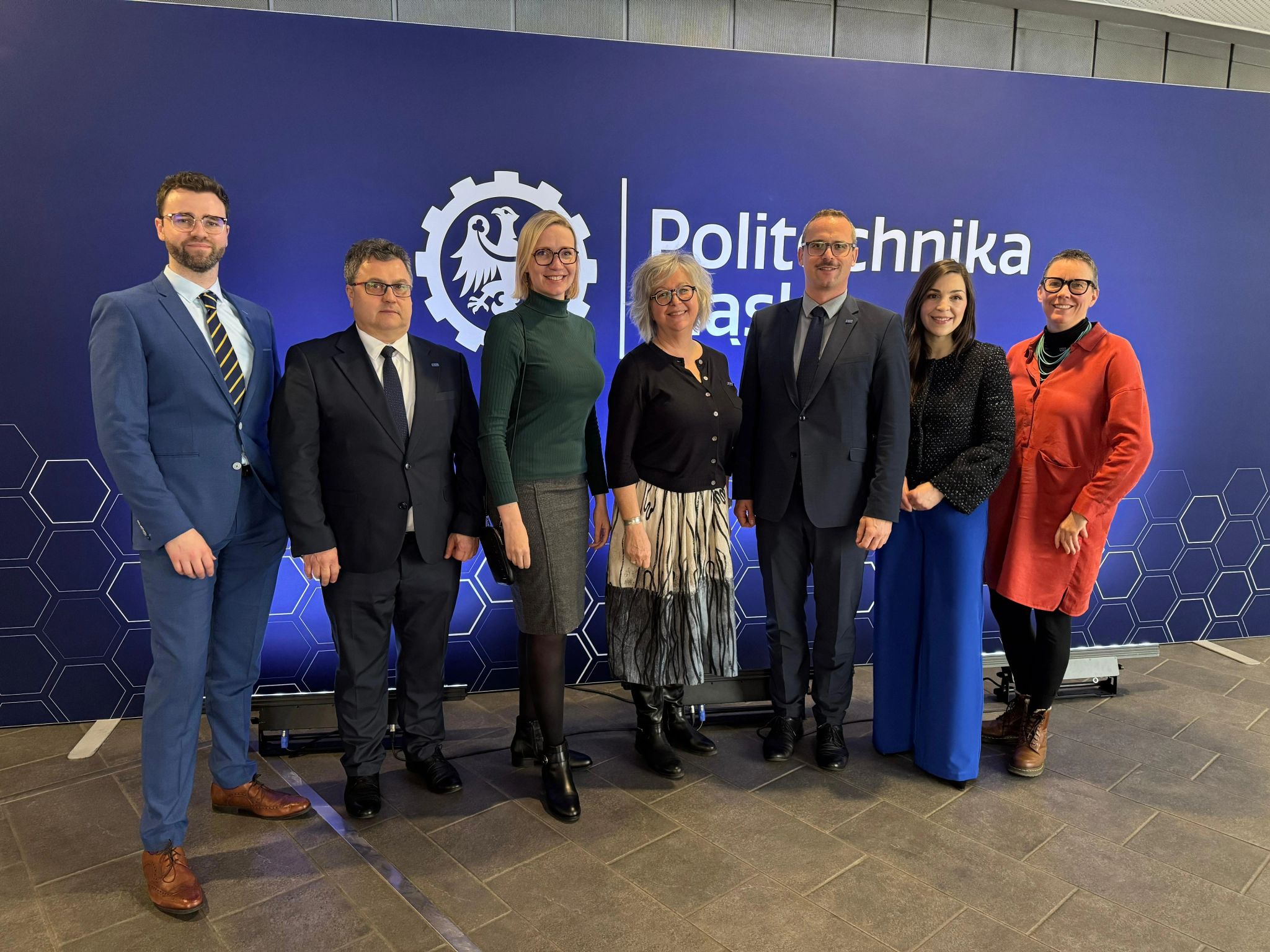We are excited to announce that registrations for the 53rd SEFI Annual Conference are now…
Diana Adela Martin from University College London England on Intercultural Ethics with Neil Cooke and Natalie Wint

The importance of engineering ethics education has been growing in recent decades, as exemplified by the numerous SEFI podcast episodes which feature the topic. However, there is increasing emphasis onthe need to shift from a focus on roles and responsibilities of the individual engineer, to taking a more macro-ethical approach. Such work requires that we consider engineering practice as value-laden and ensure that we consider the way in which it is situated within local and global contexts. We must also allow for the inclusion of non-Western cultural beliefs and values within our teaching, reflecting the differences in ethical judgement and actions between cultures.
In this episode we speak to Dr. Diana Martin, a Senior Research Fellow within the Centre for Engineering Education (CEE) at University College London (UCL). Diana applies knowledge obtained during her study of both philosophy and liberal arts in her work into the implementation of ethics, sustainability and societal aspects within engineering education, having completed her PhD project entitled “Towards a Sociotechnical Reconfiguration of Engineering and an Education for Ethics, a Critical Realist Investigation into the Patterns of Education and Accreditation of Ethics in Engineering Programmes” at TU Dublin in July 2020. Diana is currently co-chair of the SEFI Ethics SIG.
The rest of the article will summarise key discussion points:
Defining intercultural ethics
Diana explains that ethics is taken as a branch of moral philosophy concerned with providing principles and analysing concepts of right and wrong behaviour, as well as questioning which values to hold. Intercultural ethics is based on the acknowledgement of difference and considers how people from different cultures develop and relate to norms that govern relations and interactions, with the aim of co-creating ethical norms and values that account for these differences.
Moving away from the individual
Diana advocates for a broadening of ethics in a way that takes consideration, not just how an individual engineer should act according to (often Western inspired) ethical theories, but also the way in which moral behaviour can be supported and promoted by social and organisational structures within which engineering operates.
Ethics as non-exotic
Diana stresses how important it is not to alienate engineers and to instead highlight the many faces of ethics in engineering practice and engineering education, touching upon sustainability, health and safety, policy and regulation and design. She highlights how engineering is a global profession whereby technologies are used across different parts of the world meaning there is a need to develop and operate engineering artefacts in a responsible manner and inclusive of diverse cultural groups.
Value sensitive design
In the context of value sensitive design (VSD), the term “value” has been defined as “what a person or group of people consider important in life” (Friedman et al., 2006, p. 349), and values are therefore considered to guide behaviour.
VSD draws on philosophy of technology and science and technology studies, and its principles infer that every design creates possibilities and obstructions for action and application, meaning that design can promote or block the specific moral values. VSD thus considers how technological design impacts our understanding of human values and of how values are inscribed in technological artefacts during the design process (Manders-Huits, 2010). It is further used to explore and address the value dimensions of technology by considering the impact of technological artefacts on users and the environment.
Diana provides privacy as a key example of values relevant to design by talking about the use of cookies with web browsers. She also talks about technology that has been designed to have a specific purpose such as drones, nuclear reactors and electric cars which all reflect our values and the way we want the world to be. She explains that engineers are thus very powerful in their ability to shape the direction of development. She concludes by telling us that although work can be done for good, it can also implicitly incorporate and propagate dominant stereotypes, beliefs and biases, and in so doing, exclude the needs or characteristics of different user categories. She explains that this may act to exacerbate inequality and injustice over time, providing examples of: the prevalent male perspective in the technological design of artefacts such as artificial hearts which were not suitable for smaller chest cavities; early generations of voice recognition which failed to recognise the pitch typical of women’s voices; and bias algorithms. She thus explains the need for diverse design and testing teams which benefit from a wider range of perspectives and values. Finally, Diana speaks about issues with uneven distribution of risk, citing the differential impact of climate change on low-income groups in the Global South, who typically do not benefit from technological artefacts which contribute to climate change.
It can thus be argued that VSD cannot properly account for the diversity of values and how they play out in different ways across cultures and contexts (Davis & Nathan, 2015, p.21). For example, although VSD makes use of ethical theory and claims to take universal values into account, it does not make clear what and whose theories and values it includes (Albrechtslund,2007)
Participatory techniques
Diana encourages participatory techniques to help students become aware of their power and counteract some of the danger associated with concentration of power. She explicitly refers to co-creation techniques where different stakeholders can contribute and bring their own perspectives to design. This requires one to question the role of the expert and what constitutes valid expertise with technical experts being equal partners with community which have local knowledge.
Values in different contexts
Diana explains that it is hard to define the most relevant values for engineering, firstly because the list maybe incomplete, but also because each value may have different meanings or emphasis in different contexts. She provides an example, telling us about the distinction between individualistic and collectivist cultures, the latter emphasising group cohesion and harmony rather than individual privacy, something which impacts design. In individualistic cultures, a system designer may give high weight to autonomy of the individual and may include options for personalisation of a technological interface, and privacy of information. However, the design characteristic may not meet the importance placed on group cohesion or collective behaviours of those who may want to access information at a group level. There is then a question of who to prioritise.
This challenge is also presented when considering the education of engineering students, particularly as western perspectives tend to dominate curricula and textbooks. To this end, Diana explains that westernised perspectives are often mislabelled as ‘global’ because of the way that they are globally adopted, rather than because they are inclusive or bring in a range of localised perspectives and cultures. She explains that conceptual, methodological, and pedagogical debates around engineering ethics education have primarily evolved in Anglophone countries and that cultural homogeneity, and the familiarity of students with the value structure of the Western society, is taken for granted. This may present an issue because of differences regarding the nature of ethical judgments and actions across cultures, as well as the neglect of non-Western cultural beliefs and values.
She links this to assumptions when looking at who become the subject of empirical research, citing the work of Henrich et al. (2010). The authors surveyed the characteristics of participants in empirical studies in psychology and found that whilst the population of western, educated, rich, industrialised and democratic (WEIRD) is a small percentage of the global population, it makes up more than 80% of the research population. The implication of this is that findings that we consider generalisable may in fact only apply to a certain small part of the population.
Bringing it into the classroom
Diana describes integrating ethics in a challenge-based learning module whereby external organisations such as industrial companies, NGOs or research groups would set a problem area and in which students had to identify and formulate a problem. She elaborates on one specific collaboration which focused on the conversion of plastic waste to plastic bricks. She highlights how the project involved the creation of sustainable technology as well as meeting the needs of the population, and that it highlighted values such as sustainability and justice. Students worked on this task from September to April with the first quarter focused on participatory methods and societal aspects associated with risk, the second quarter focused on technological factors and the third on the development of a risk assessment. Diana explains that the two different groups took very different approaches, the first focusing on the technology involved in conversion, and the second focusing on transportation of plastic to the conversion facility. This involved consideration for protection of waste pickers, creating surveys to understand accident rates, and consideration for acceptable risk in different contexts. She concludes by attesting to the benefit of close engagement with a diverse range of stakeholders, communities, and different cultures, as well as authentic, experiential experiences, believing that immersive element as an important mark of a global and culturally inclusive engineering ethics education.
International Handbook of Engineering Education Research Chapter
Diana tells us about her co-authored chapter in the handbook, which focuses on the current state of global and culturally inclusive engineering ethics education. The chapter describes findings from a bibliometric study which revealed the dominance of American and Anglo speaking research in the field of engineering ethics education. Diana suggests a need to focus on bringing undocumented approaches to engineering ethics education to the surface to ensure that the literature reflects the variety of approaches (for example Confucianism or indigenous knowledge) that can be taken in different cultures and parts of the world.
She also explains that the dominance of papers from the USA reflects the role of funding bodies such as the National Science Foundation (NSF) which allows for large scale studies. Such differences in research funding can act to make perspectives rooted in other contexts, where they do not benefit from the same level of resource and funding, as ‘invisible’.
She explains that accreditation is one of the main factors driving ethics education, especially in countries that are signatory to the Washington Accord, and that accreditation may be the first place to try and make changes to help diversify the perspectives taken.
Takeaways
Diana advises us not to be afraid of ethics because it is unavoidable. Instead of teaching from a philosophical perspective, she encourages us to help students consider the context and what outcomes they intend to achieve, and to engage with broader groups to frame and identify a problem.
She explains that there is a need to enhance the cultural relevance and representativeness of engineering ethics education research towards a global approach, something which requires identifying ways to broaden the theoretical framing, research questions, demography, methods, scope, authorship, and audience of future research studies. She thus encourages us, as researchers, to bring in the places and voices that we do not know and are not heard.
She points to the following points from the handbook chapter
- Research studies are encouraged to make their positionality and demographics explicit and engage with the challenges of global context (cultural, national, and/or political boundaries).
- Engineering (ethics) education working groups and local chapters need to be constituted to add value beyond their local or original sphere of influence and collaborate on capacity development, outreach, and research dissemination.
- Research-funding bodies are encouraged to support and be oriented at transnational or transdisciplinary approaches, scope, and consortia composition.
- Repositories of pedagogical resources should strive to internationalize their scope, to curate resources from different geographical and cultural contexts or address culturally situated themes (p. 107-108)
Finally, she encourages institutional leaders to support inclusive change by bringing in specialists in engineering ethics education to collaborate with educators to create educational programmes and interventions that take intercultural aspects of ethics into account.
Further Reading
This link is for the chapter in the International Handbook for Engineering Education Research entitled “Developing a Global and Culturally Inclusive Vision of Engineering Ethics Education and Research”
This paper argues that mainstream value-sensitive approaches to design have been based on narrow understandings of personhood and social dynamics, which are biased toward Western Educated Industrialized Rich and Democratic cultures and contradicted by empirical evidence
https://link.springer.com/article/10.1007/s10516-023-09689-9
Other sources
Albrechtslund, A. (2007). Ethics and technology design. Ethics and Information Technology, 9, 63– 72. https://doi.org/10.1007/s10676-006-9129-8
Davis, J., & Nathan, L.P. (2015). Value Sensitive Design: Applications, Adaptations, and Critiques. In: van den Hoven, J., Vermaas, P., van de Poel, I. (eds) Handbook of Ethics, Values, and Technological Design. Springer. https://doi.org/10.1007/978-94-007-6970-0_3
Friedman B, Kahn P. H. Jr, Borning, A. (2006). Value sensitive design and information systems. In: Zhang P, Galletta D (eds). Human-computer interaction in management information systems: foundations. M.E. Sharpe, Armonk, 348–372.
Henrich J, Heine SJ, Norenzayan A. The weirdest people in the world? Behavioral and Brain Sciences. 2010;33(2-3):61-83. doi:10.1017/S0140525X0999152X


